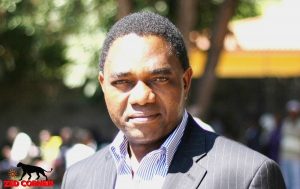by
Mwizenge S. Tembo, Ph. D.
Professor of Sociology
Introduction
The soul of kinship has been the strongest pillar of my entire life since I lived in the village at Chipewa in the late 1950s. This village is located among the Tumbuka people in the Lundazi district of the Eastern Province of Zambia. It is because my life has always been deeply embedded in kinship that I have never felt alone in the worst of circumstances in life since my childhood up to my entire adult life. This is when I have been alone facing some of life’s most difficult personal challenges in school, my career, in marriage, family, child rearing, work, personal conflicts, illness, death, grief, the anguish of isolation, and loneliness in unfamiliar distant lands among strangers far away from my kinship. The soul of kinship is the feeling of having an intimate place as a member among a large group, the soothing feeling of unconditional  belonging, recognition, acceptance, physical security, emotional comfort, and the love that all bind you to more than sometimes as many as 200 to 400 men, women, and children who are members of one’s kinship often in a village or many villages. The soul of kinship is the feeling that you are connected to all these people not because you are rich, poor, tall or short, educated or uneducated, beautiful or ugly, of a certain race, religion; but because you are just you as a living breathing human being.
belonging, recognition, acceptance, physical security, emotional comfort, and the love that all bind you to more than sometimes as many as 200 to 400 men, women, and children who are members of one’s kinship often in a village or many villages. The soul of kinship is the feeling that you are connected to all these people not because you are rich, poor, tall or short, educated or uneducated, beautiful or ugly, of a certain race, religion; but because you are just you as a living breathing human being.
The power and soul of kinship in the Zambian or African context cannot be fully appreciated unless it is described in order to understand its influence. This is why I will first describe kinship and then later describe the power of the soul of kinship.
Zambian Traditional Kinship
The Zambian and African kinship is very intimate, broad and uses many kinship terminologies. The nuclear family of the man, his wife, and their biological children is embedded in the extended family wide kinship network that includes and binds the man and woman family and entire kinship. There are mainly two types of marriages and families that determine kinship; the patrilineal and matrilineal.
The patrilineal families, marriages and societies practice customs in which when a woman is married she moves to her husband’s village or dwelling. Since my Tumbuka tribe practices patrilineal kinship customs, all my father’s brothers are my fathers or Dads or Adada. All my father’s sisters are my ankhazi or aunts and all their husbands are asibweni or uncles. All my father’s brother’s children are my sisters or dumbu and brothers or dumbu. All my father’s sisters’ children are my bavyala or cousins. All my mother’s sisters are my mothers or amama. All my mother’s brothers are my asibweni or uncles. All my mother’s brothers’ wives are my apongozi of which the closest English equivalent is aunt. All my mother’s brothers’ and sisters’ children are bavyala or cousins. A girl or woman has exactly the same kinship relationships.
All my brother’s children are bana bane or my children or my sons and daughters. All my sister’s children are baphwa or nephews and nieces. All the children of my sons and daughters are bazukulu or grandchildren. All the children of my children are bazukulu chivu or great grandchildren.
Complexity of Kinship
What makes the kinship relationships appear complex to the outsider is that if there are polygamous marriages, all the described relationships apply or are followed. For example, if my father’s father had 3 wives, all the women are agogo or my grandmothers. All the children of the 3 wives are my father’s brothers and sisters. My mother’s father’s wives are all my agogo or grandmothers. All my grandfathers’ wives and brothers on both my mother and father’s families are agogo or grandmothers or grandfathers.
The few families, tribes or societies in Zambia that practice matrilineal kinship customs will have some differences in customs. In these societies, when the woman gets married, her husband moves to her village or kinship dwelling. In the matrilineal society, the boy is raised to identify, depend on, and be closest to his mother’s side of the family kinship who are his mother’s brothers or uncles.
These relationships I have describe so far do not even include some of the other numerous kinship relationships that are immediately established as soon as a man and woman get married and two large kinships relationships and families become united. All the couple’s brothers and sisters become mulamu or sisters and brothers’in-law. The mothers and fathers of the couple are asebele or parents-in-law. All of these terms and relationships apply when the couple comes from polygamous families in which a man may be married up to 3 or my be even 5 wives with numerous children. The same applies if the woman is married to a polygamous man in which case the woman may have 2, 3 or may be even 5 co-wives with numerous children including her own.
Kinship Baffles Europeans
When Europeans encountered Zambian or African kinship, they found the complexity so perplexing that a European professor or Lecturer in the 1970s at the University of Zambia describe this incident that he found baffling. His Zambian student was absent from class. When the student returned to class, the Professor asked him why he was absent. The student said his mother had passed away and he had to attend her funeral. Three months later the same student was absent again and the Professor asked him why he was absent again. The student replied that his mother had passed away and he had gone to attend to her funeral. The Westerner will assume that either the student was lying or doesn’t understand that he can have only one mother: that is her biological mother. But unless you understand the Zambian culture, as an outsider and especially Europeans, you may not understand that one can have so many mothers, fathers, sisters, brothers or agogo or grandparents.
When I was young, all my siblings and I had two mothers; my mother and her younger sister, aNyaMsuzghika, who is now deceased. I also have two amama or mothers today; my biological mother in the village and my mother who lives on the farm in Chainda or Ibex Hill in Lusaka the Capital City of Zambia. Both of them have been significant in my life. They both treat and love me as their son and I love and treat them as my mothers. Everyone in my kinship knows and calls both of them my mothers.
How Do You Identify Them?
One question that is always expressed and baffles Westerners or even modern urbanized and Europeanized Zambians and Africans is: “If you have so many mothers, brothers, sisters in all these kinships, how do you tell them apart? How do you tell who is your real mother?” Who is the real relative and not real or distant relative does not exist in the traditional Zambian kinship. The way relatives identify each other is that they intimately know who is married to whom, their names, when they were born, what village or town they live in and lastly the language that is used to explain kinship is very specific to the culture. For example, my younger sister lives in Chipata. First, we are dumbu or brother and sister. We can say mkulu na munung’una older or younger sibling. Then we say tika dikana which means she was born next or immediately after me. If we are explaining to an extended family member and we say our mother is aNyaNthula they will immediately say: “Oh!! I know who you are or how you are related to me because your mother aNyaNthula is also my mother. So we are brothers and sisters.” Right there, the kinship bond is both explained, identity, and belonging are established.
Kinship Relationships
These kinship relationships are not just mere cold objective labels or words that as used to indicate who I am related to. But they are symbols of the social binding that exists between a large group of people. Dumbu or sisters, mulamu or in-laws, asibweni or uncle, adada father or dad, amama or mother or mom, ankhazi or aunt, vyala or cousin all are relationships with serious and deep obligations. This is how the kinship members share moments of joy but also support each other in times poverty, suffering, death, sorrow, loss, or conflict, or just the ups and downs of life’s troubles. It is probably the seriousness and depth of these kinship relationships that among the Tumbuka and Zambian traditional kinship relationships there are no step mothers and step fathers, there are no half-brothers or half-sisters, distant relationships or distant cousins. Regarding the significance of biology, no one is the real mother or real father, or real sister or real brother just purely based on the distinction of biological relationships. Of course this doesn’t mean people ignore or are not aware of biological relationships. It just means biological relationships are regarded as secondary or briefly dwelt on if asked especially by anthropological researchers, strangers, and outsiders. What seems to matter most are the deep social bonds that bind people embedded in the kinship relationships passed on from generation to generation for hundreds if not thousands of years.
First Meet Relatives
My father had just completed his teacher training at Katete Mission and was given his first teaching assignment at Chasela School deep in the Luangwa Valley among the Bisa people. My father dispatched my mother and I to visit her village. My mother for months had told me I had so many relatives in the village; grandparents, uncles, apongozi or aunts and especially young cousins my age that I could play with. I was so primed and excited to go to the village.
We boarded the Central African Road Services (CARS) bus via Fort Jameson (Chipata) to Lundazi and then to Hoya along the Chama Road. Once we got off at Hoya, we walked for about one mile in the bush path when we arrived at a small village. Several women came running towards us laughing and smiling and quickly grabbed my mother’s luggage from her head. A small old woman walked toward us lifting her hands up in the air with utter joy and with a small dance to welcome us. As all the commotion was going on my mother turned to me and said:
“This is your agogo (grandmother) a NyaKundambo and this is Jali-Jali village.”
With in an hour we were eating fresh and delicious pumpkins and sweet dobe fresh maize. My mother said all the people in that village were related to me. I could come there at any time. I would be welcome and I could stay. Soon we bid everyone farewell and continued to walk in the bush path toward my mother’s village of Chipewa. The women relatives from Jali-Jali escorted us for a little distance carrying my mother’s luggage on their head. Then the women who had hosted us turned back.
We Arrive at Chipewa
While walking along in the pleasant Savannah bush path or nthowa, we heard the loud melodious songs of njiba birds, the tiny blue nyasisi birds, mthyengu birds and nyapwele birds. After the two of us had walked in the meandering bush path for an hour, my mother and I heard the sound of pestles and mortars pounding. We heard some loud voices, bleating of goats, and roosters crowing. The dogs began barking toward our path as we drew closer.
“We are near our village now,” my mother said.
I was bursting with excited anticipation. I had been told about the village for months. We were finally here. We emerged from the bush path leading into the eastern side of Chipewa Village. There were two straight rolls of rectangular roof thatched house stretching as far as I could see. The middle of the village open and empty.
“Ehhhh!!! a NyaNthula!!!” two women shouted once they saw us.
“Ehhh!!! a Nyina Yakhobe!!!!” 3 other women shouted.
They run towards us as the chorus of “aNyaNthula biza!!!!” spread around the village. The women grabbed my mother’s luggage from her head. Soon there were women ululating, raising their hands into the air, clapping, laughing with just sheer joy.
“You must be tired,” one woman said.
“You have been gone so long I almost didn’t recognize you!!” a man said.
“If you had written us a letter about your coming, we would have met you at Hoya bus station!!!” someone said.
“Ah! Ah! Ah! Is this your son Yakhobe?” one woman asked as she pointed at me.
“Enya,” (yes) my mother replied.
All the young children were gravitating toward me as they stared at me intently while keeping a discreet distance.
There were a cacophony of so many voices as the growing loud and excited entourage walked past ten houses until we arrived at my grandfather and grandmother’s house. My mother was given a reed mat to sit on and I sat beside her. There was a large group of men and women slowly gathering as the news rippled through the village that a NyaNthula the daughter of aMchawa had arrived with her son Yakhobe.
Soon a large group of men, women, and children had gathered from the entire village. Men sat on one side and women on the other side. A man stood up and called a boy about my age.
“Jemusi!” he called. “You and your friends chase and catch the large red rooster. Give it to your mother so we can cook it for your akhazi aNyaNthula (aunt) and vyala wako Yakhobe (cousin). Yendeskani !!! (Hurry up)
The man was Asibweni (uncle) Mzimphu and mvyala (cousin) Jemusi (James). The two would have such an influential impact on my life growing up in the village.
Malonje
After a while of small talk, it was time for the Tumbuka malonje custom and ritual. During malonje, a guest describes in systematic detail their journey, the state of health of the family and people the guest they left behind and the purpose of the visit. My mother was center stage as she explained and described the chronology of the trip down to our arrival at Hoya, visiting agogo aNyakudambo and that the purpose of the trip was we came to visit relatives and family.
My agogo aMchawa described the malonje for the family and village. My agogo Tendelu concluded the malonje adding her own perspective.
The large group of relatives and other people from the village dispersed. This is when my mother began to introduce me to the relatives that would mean so much to me for the rest of my life. My avylala (cousins) Jemusi and Sokoyala who were my age mates. My youngest asibweni (uncle) later in life was to be called UBZ (United Bus Company of Zambia) because he worked for UBZ for a few years as a bus conductor. My asibweni (uncles) Mzimphu, Kunotha, and Mwendapoli. Apongozi (aunts) aNyamhoni, Anyina Sokoyala, and Anyina Jemusi. Of course my agogo (grandmother) aTendelu and agogo (grandfather) aMchawa.
The First Day
That first day was emotionally so overwhelming that tears still flow in my eyes just thinking of those moments 57 years ago. As a child it was the underserved feeling of everyone in the village making you feel like a celebrity without having done anything heroic. As a child I kept asking my mother, why are they doing all these good things? Why are they so happy to see us? My mother kept saying: “Because they love us. We are their relatives.” As a child I just opened my heart and loved to all of them. How could I not?
That evening more than 12 nshimas were delivered to us in honor of my mother and I. Remember I had eaten pumpkins and sweet dobe fresh maize earlier in the afternoon? When eating my mother cautioned me not to over eat as all the food had chicken and other delicious ndiwos or ma dende with nshima. She said otherwise I would experience kutyumba which is when you over eat and spend the night in the toilet or bush. This was an important piece of advice because I experienced kutyumba as recently as 2015 in the village because I ate too much of the delicious food which included nshima with goat meat, delicious special nchunga ziswesi (red kidney beans), and plenty of juicy sweet fresh mangoes straight from the numerous mango trees.
So this was the first day of the beginning to the deepening of my soul of kinship that was to last a life time. So many both negative and positive things happened in the village. But all we members of my kinship love each other. Members die and new ones are born. Members marry from and unite with different families. We still keep track of where we are even as we scatter to cities and other distant parts of the world. The bond expands and continues. I invite everyone to join in this precious soul of kinship.
References
Tembo, Mwizenge S., Satisfying Zambian Hunger for Culture, Indiana: Xlibris Corporation, 2012




